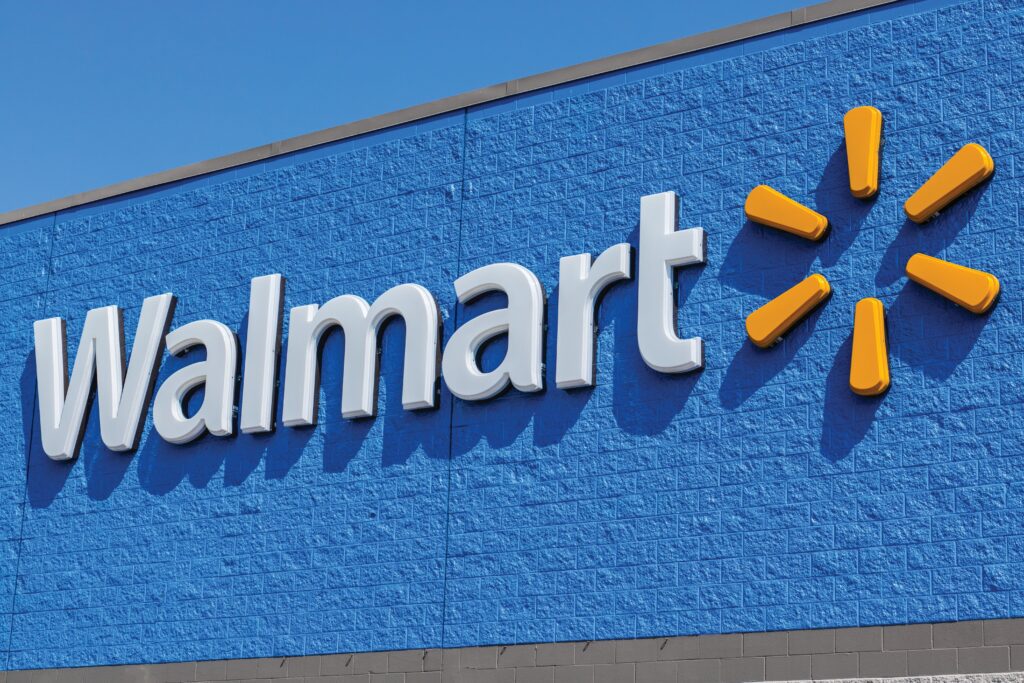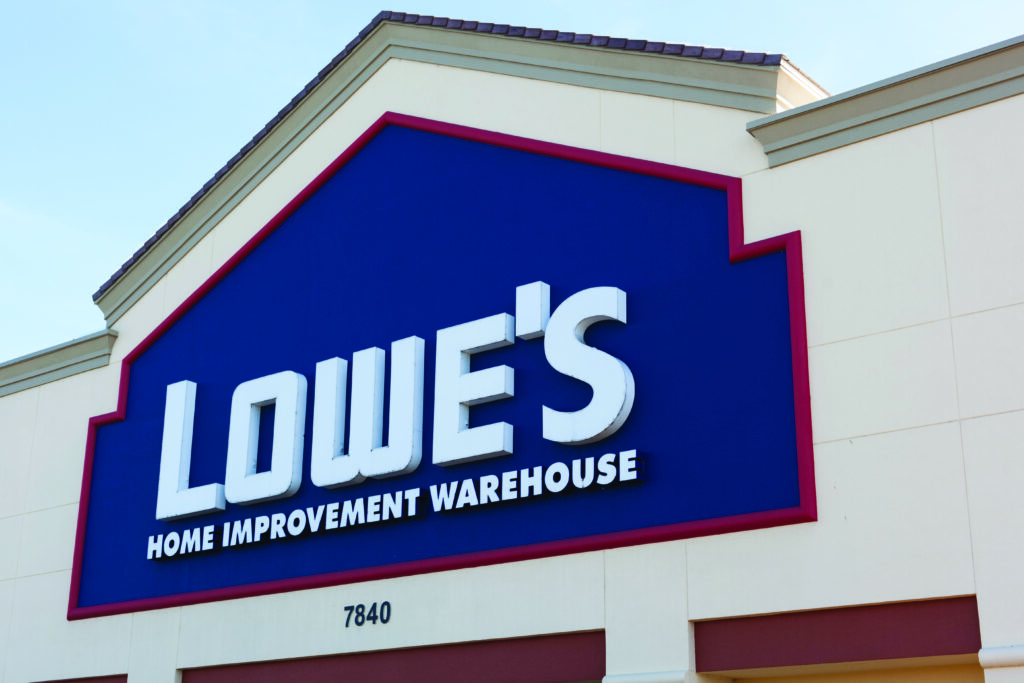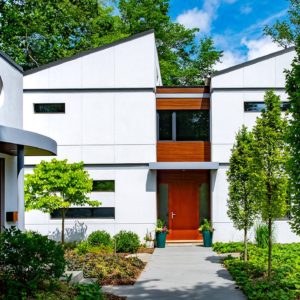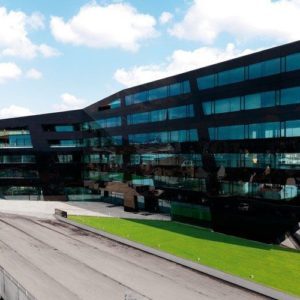Colors are powerful. They shape our perceptions and affect our mood. That’s why the selection of colors in architecture is so important. Traditionally, lighter colors have been preferred for use on exteriors in commercial buildings. They convey a bright and positive feel. They appear cleaner. That trend is changing.
In recent years, there has been a growing demand for deep, bold colors in modern architecture. Dark colors add depth and dimension, creating a sense of sophistication, luxury, and exclusivity that can be appealing to high-end clients. Dark colors can also help create a unique brand identity. Standing out is difficult today. Using darker colors can help create a one-of-a-kind aesthetic with a strong visual impact.
Before you go to the dark side, however, there are a few things to be aware of. Let’s start with performance.
Considerations for Dark Colors

We all know that lighter colors reflect more light. For darker colors, the opposite is true: they absorb more light. This exposes the exterior facade to more ultraviolet radiation, which can result in faster fading and the breakdown of organic pigments. Depending on your geography, UV exposure may or may not be a concern. After all, places like Las Vegas have greater UV intensity than places like Toronto.
If darker colors absorb more light, they also, by extension, absorb more heat. In geographies with wide temperature fluctuations, expansion and contraction due to heat and cold cycles can lead to cracking, creating maintenance challenges. Certain systems or materials may also recommend against the use of dark colors. Some wall systems, such as EIFS, that use foam plastic insulation as the continuous insulation can experience deformation when the surface reaches a temperature higher than 167°F. Therefore, it is recommended to use colors with an LRV above 20. An EIFS system using mineral wool is a viable solution when wanting to use EIFS with a dark color, as mineral wool insulation isn’t impacted by the higher surface temperature. (See Tech Hotline 1294 Restrictions on the Use of Dark Colors on EIFS systems).
Also, darker exterior colors tend to exacerbate moisture retention. So, while areas with high humidity or consistent rainfall exposure create ideal conditions for mold and mildew growth on any color coating, darker colors are especially vulnerable.
How LRV Factors Into the Equation

Light Reflectance Value (LRV) also plays a role here. LRV is the total amount of visible and usable light reflected by a surface in all directions when illuminated by a light source. This is measured as a percentage between 0 and 100, with absolute black having an LRV of 0 and white having an LRV of 100. Lighter colors typically have higher numbers than darker colors. The more light is reflected by a color, the higher the LRV; the more light is absorbed by a color, the lower the LRV.
In short, a lower LRV – typically associated with darker colors – absorbs more heat, which contributes to greater overall material stress, potentially shortening the product’s lifespan, fading colors, or impacting other materials in the building envelope, like the insulation.
The Science behind Pigment/Binder Choices for Finishes and Coatings
Inorganic pigments are less affected by light because they are more stable, resisting UV fade for longer periods. Organic pigments, on the other hand, allow for bold, custom hues but tend to fade faster.
Pigment Volume Concentration (PVC) refers to the ratio of pigment volume to the volume of solids in the paint film after drying. It’s a key factor influencing paint performance and properties, such as durability, gloss, and permeability. A higher PVC indicates that the paint has been formulated with more pigment and less binder. Because dark colors require more pigment, chalking is more visible. The aggregate volume in finishes drives the High PVC, making it impossible to fully encapsulate with polymer, and therefore, breaking down the coating or finish quicker.
The Basics of Bases
It is imperative to use the correct base when tinting a coating. TSW (Tint Station White) is not recommended as the base for all colors, especially dark or bold colors. Deep, dark bases are specifically designed to produce darker colors when tinted. Manufacturers often create bases designed for use with bold or dark colors. Just defaulting to what’s in stock can offer a “quick solution,” but is likely not the best solution for long-term performance. Using the manufacturer’s recommended base ensures that the final color is rich and vibrant without the need to add excessive amounts of colorant.
Now for the Good News

Sure, lighter colors perform better. But all is not lost. There are performance enhancers that address many of these issues. Building design alone can help. Roof overhangs and other shading design elements can greatly reduce UV and moisture exposure. Additionally, today’s coatings are becoming increasingly advanced. For example, coatings with fungal resistance can help mitigate the issues of mold and mildew commonly found in humid climates.
One of the easiest ways to extend durability and enhance performance when using dark colors is to use Sto® Clear Coat Sealer and to specify colors that do not contain organic pigments, as these pigments are less affected by light.
Benefits of Sto Clear Coat Sealer include:
- Maximum Fade Resistance: 8-12+ years (dark organic colors)
- Improved dirt pick-up resistance (easy to clean)
- Improved Mar Resistance
- Improved Fungal and Algal Resistance
- Can be used over standard finishes
- Significantly extends service life vs standard finish
Another great solution is to use StoColor® Acryl Plus, an acrylic-based, high-performance coating that protects against weather, salts, and environmental pollutants.
StoColor Acryl Plus (Eggshell and Flat) benefits include:
- Excellent Fade Resistance: 6-10 years (dark organic colors)
- Improved dirt pick-up resistance
- Improved Mar Resistance
- Improved Fungal and Algal Resistance
- Can be used over standard and textured finishes for a textured look with a dark color
- More forgiving application than CCS
- Offers much longer service life vs standard finish
Welcome to the Dark Side

Like many others, you’ve heard the call of the dark. Now, you’re aware of the drawbacks and the solutions to those drawbacks, so you’re able to thoughtfully integrate darker colors into your design. In other words, you’re no longer in the dark about darker colors. Welcome to the dark side.
To explore our high-performance dark color options, visit stocorp.com.


